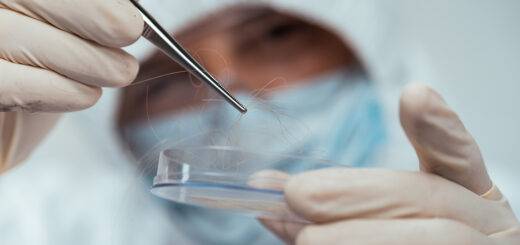Basic Overview of DNA and Its Use in Forensic Analysis
Deoxyribonucleic acid or DNA is a substance that contains the genetic instructions in all human beings (and nearly all life, with the exception of certain viruses). Think of DNA has a ladder that spirals. The two long spokes of the ladder are called nucleotides. The rungs of the ladder contain the molecules, called bases, that form the actual genetic code.
There are four types of bases – Guanine, Cytosine, Adenine, and Thymine – which form pairs in the form of A-T and C-G. These pairs form strings along the run of the ladder. But because the bases appear in different orders – TTAAGGG or TAGAAG – and so forth, it’s the patterns that carry the instructions that enable the formation of cells that in turn form life, including human life.
DNA is contained as Chromosomes in human cells. Humans typically have 46 chromosomes (unless there’s a genetic abnormality). Two of those chromosomes indicate the sex of the human being – X-Y for male, and X-X for female.
There are roughly 3 billion base pairs – within those 46 chromosomes. More than 99 percent of the DNA in human beings is identical to other human beings. What makes us different is determined by approximately 3 million base pairs, which indicate the different genetic characteristics – from hair color, to height, to other traits – that creates the differences between individual human beings.
No two human beings – with the exception of identical twins – share the same DNA. We each get half of our DNA from our father, and half of our DNA from our mother. But siblings – who are not identical twins – get different halves, and so brothers and sisters, while the share more DNA than strangers, do not have identical DNA patterns.
DNA was first identified in the 1950s. But it wasn’t until the 1980s that scientists identified ways of easily and cheaply distinguishing between different DNA patterns.
The reason this is important is that people leave little bits of DNA behind wherever they go. This is called “sloughing”. Some people slough more than others, thereby leaving more DNA behind them. DNA might be carried in sweat, hair particles, skin particles, or saliva.
Unlike fingerprint analysis – which is always open to interpretation because it is relatively imprecise – DNA analysis is incredibly precise. Assuming that the forensic analyst or technician has done his job properly, and assuming there has been no cross-contamination, the DNA profile generated by forensic analysts will reflect the DNA profile of people who left their DNA behind at a particular place.
And while there are more than 3 million differences between in the DNA between various human beings, by using statistical analysis, scientists can match profiles with very high degrees of precision based on just 15 commonly used loci (or spots) on a DNA strand.
Today the whole process is so automated and standardized, that forensic analysis of DNA can be accomplished relatively cheaply by easily-trained forensic analysts. These analysts are not scientists. Rather they are people who know how to use several machines and computers that help extract, quantify, amplify, and then analyze DNA strands. They then use this information to “exclude” possible contributors to the DNA. If, however, they cannot exclude a contributor, then they will sometimes conclude that the there is a 1 in 1,000,000 or 10,000,000 or even higher chance that the person’s DNA is not present. The higher the number, the more likely it is that the person was a contributor.




